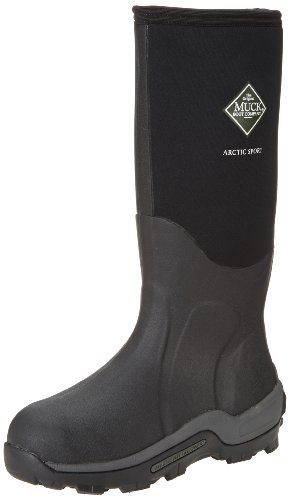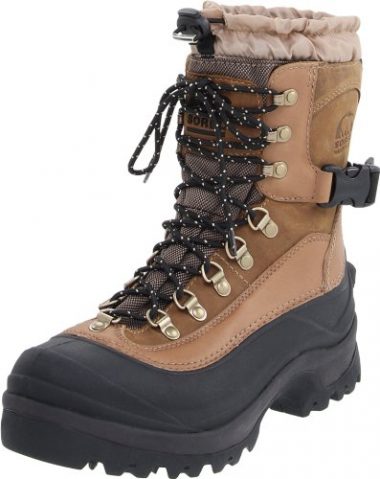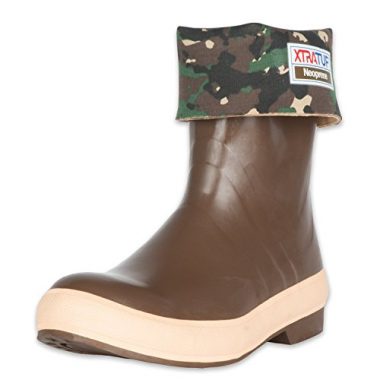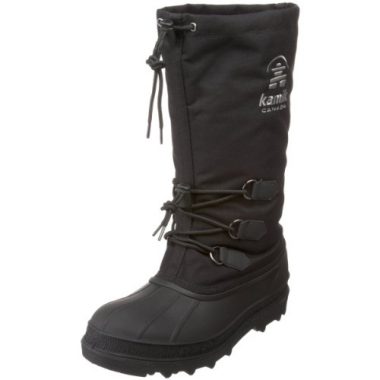https://www.globosurfer.com/best-ice-fishing-boots/

If you are someone who enjoys the outdoors you likely are well acquainted with the importance of having the right gear. This is especially true when adding into the harsh winter conditions seen when ice fishing. Many fishermen are testing the limits of this sport and carrying it on all year long. In fact, some fisherman even travel to colder destinations, such as Alaska and Minnesota, for the sole purpose of ice fishing.
Anyone who has ever tried ice fishing will tell you that with the prolonged exposure to the elements, there is a great importance that needs to be placed on gear. Perhaps most importantly, it is crucial to have the best winter boots for ice fishing. As you lose a great amount of heat from your feet, having the best footwear will go a long way in keeping you warm and safe.
When you are in these cold winter conditions, having appropriate gear can mean the difference between life and death, or at least serious injury. These types of conditions are prone to frostbite and hypothermia. When you are still for extended periods of time, as done with fishing, and in cold conditions, your body will naturally pull all heat to protect your core. This leaves your extremities, such as your feet and fingers, at a great risk for frostbite. Having the best ice fishing boots can make a great difference to your safety and comfort.
When you are in such vulnerable conditions it is important to have the best gear. To help keep you safe and help navigate you through all the different options available to you, we have put together a list of what we consider to be the top options available on today’s market. We have also gone into great detail about what features are important to look for in your next pair of boots.
Ready to get started? Let’s go.
OUR TOP PICK
Muck Boot The Original

- Stand Out Features - Why We Love It
- -20 °F (-30 °C) Rating
- Fleece and faux fur lining
- Highly durable
EDITORS CHOICE
Sorel Conquest

- Stand Out Features - Why We Love It
- Removable EVA footbed
- Waterproof leather
- 3 color styles
Irish Setter 860 Elk Tracker

- Stand Out Features - Why We Love It
- Gore-Tex and Thinsulate
- ScentBan
- Flexible
Xtratuf Legacy Series 12”

- Stand Out Features - Why We Love It
- Durable
- Toe and heel bumper
- Flexible rubber
Bogs Men’s Classic Ultra Mid Insulated Waterproof

- Stand Out Features - Why We Love It
- Max-Wick technology
- Pull on handles
- DuraFresh odor fighter
Lacrosse Hunt Pac Extreme 10” Leather

- Stand Out Features - Why We Love It
- Great for hiking
- Rubber crampon grip
- Ultra lightweight
Kamik Canuck

- Stand Out Features - Why We Love It
- Removable liner
- Fits large
- Super comfortable
Baffin Endurance Snowx

- Stand Out Features - Why We Love It
- Storage pocket above ankle
- Storage pocket above ankle
- Aggressive tread pattern
Xtratuf Elite Series 15”

- Stand Out Features - Why We Love It
- Water and chemical proof coated neoprene
- Reinforced rubber
- Airmesh lining
How To Choose The Best Ice Fishing Boots – Buying Guide
As with buying any sort of outdoor gear, it is important to buy the best options available to you. This is not simply for style but rather for comfort and safety. As you will be spending a great deal of time with prolonged exposure to rugged winter conditions, it is important to have the best gear to keep you protected.
When looking for your next pair of ice fishing boots it is important to look at a few key features first and foremost. These include a great level of insulation, traction, and durability. A lot of what determines whether the boots you opt for will be durable depends on the materials used to make it as well as the design itself of the shoe.
While it may be difficult to navigate your way through the many options available on the market, it can be quite a bit easier if you know what you are looking for. That is why we have put together this buying guide. Here we will explain the terminology used in these boots as well as the features that are available to you. From here you can know all of your options and be better suited to get the best pair for you.
Insulation
One of the most important aspects to consider when looking for winter boots for ice fishing is the insulation. The insulation in your boot will help to keep your feet comfortable and warm for long days. These types of boots all come with different levels of insulation. The level of insulation your boot has will tell you the climate it is ideal for. Warm fishing boots can be a lifesaver – literally. In very cold extreme conditions you will need a boot with a higher gram of insulation than in more mild conditions. The insulation will also provide added comfort to your boot with extra cushioning.
Keeping your feet properly insulated will allow you better mobility by increasing your circulation. This will work to keep the rest of your body much warmer as well. You will come across many different materials that feature insulating properties such as rubber, wool felt, zylex and more.
As frostbite is a major risk with this kind of activity, it is important to focus on adequate insulation in your boots. We typically recommend sticking with a 400 gram insulation rating for harsh winter conditions. This will work to provide enough cushion and insulation to handle rugged winter cold of below freezing temperatures. For milder conditions, a rating of 200 grams will be more ideal for use in more moderate fall and spring conditions. It is important to ensure that you have a boot that hits at the mid calf level for the most thorough insulation.
Traction
When ice fishing you can count on the terrain to be wet and slippery. The icy and heavy packed snow conditions make you prone to slipping. This can be incredibly dangerous, especially when walking over a frozen body of water. While it may cause injury, in some conditions it could even cause you to fall through the ice, a potentially life threatening mistake.
For this very reason, having a shoe with appropriate traction should be one of the first things you look for in your next ice fishing boot. Traction from your shoe comes in many forms and depend mostly on the conditions you will be walking in. In snowy conditions, a deep tread should be enough to keep your feet secure. In ice conditions, you will want the sole of your shoe to feature spikes that allow you to hold your position firmly. Modern designs for this type of boot should have rugged grip that will keep you in place with ease no matter how slippery the ground under your feet is.
Waterproof
While your regular winter boots may be weatherproof or water resistant, this is simply not enough for ice fishing. As you drill your hole, you will likely find yourself in a pool of frozen ice water all around you that can make your feet incredibly uncomfortable. If your boots are waterproof your feet will stay safe, warm, and dry. If they are not properly sealed you will find yourself uncomfortable and cold very quickly forcing you to cut your day short. This rugged layer is most often made of a tough rubber material that works to perfectly seal your shoes.
While the bottoms of your shoes will need to have a tough waterproofing layer, the upper area of your boots may be merely water resistant. This is done to reduce the weight of these boots. Typically you will find this area of your boot being made with a leather, nylon or rubber material.
At the top of your boot, you may notice a gaiter. This area of the boot provides better insulation but can be a very important part of the waterproofing ability of your shoe. When considering how much your shoes will hold up to the pressures of the outdoors be sure to pay specific attention to the fastening mechanisms. Laces can act as a weak point in your shoe and let in a lot of moisture. Instead, opting for a shoe that features zippers or buckles will provide stronger protection.
Size And Weight
Ice fishing boots need to have a balance between size and weight. If the boots are too bulky they will be clumsy and get in the way of your walking. Also, if they’re too heavy you won’t be able to walk for long distances before getting tired. But a light boot may not have the insulation or high quality materials needed for extreme conditions.
Grip
While traction is incredibly important as it helps you to keep moving forward without issue, grip is also important. Grip refers to your ability to stay planted in one position with slipping around. This is specifically important when fishing and standing in the same position. When fighting to reel in your fish you need to be assured that your feet will stay planted below you. This will go a long way in preventing injuries and is especially useful in reducing the risk of pulling your back when slipping. This is one safety feature that can not be ignored. If not for your safety, having adequate grip will make it so that you have to exude far less energy just to stay upright. When fighting to reel in your fish you need to have everything on your side possible, including shoes with the best grip possible.
Removable Liners
Snow boots with removable liners are a great option for this type of use. The liner refers to the interior part of the boot that comes into contact with the sole of your foot. Being able to remove this after a long day out on the water will go a long way to increase the lifespan of your boot. Here you will be able to remove, clean, and appropriately dry the inside of your boot. This will decrease moisture within your boot and work to keep the odor of your boot fresh.
Durability
Ice fishing boots, like most boots, require a significant investment. While it is one purchase that is incredibly worth it, you want to ensure that you can get the most out of your money. For this reason, you need a pair of boots that are rugged enough to stand the test of time. A lot of times, this comes down to the materials that are being used. Choosing a high quality boot is a choice that you will not regret. It may be wise to choose a big name brand as they will often have top of the line qualities. We recommend looking into boots that come with some sort of warranty. This will go a long way in ensuring that you get the most from your money.
Material
This is how you can tell the quality of the boots. If the company uses lower quality materials you’ll know the boots won’t stand up to the conditions or last over time. Ice fishing can be during some of the most adverse conditions and your boots need to be able to protect you. This is partly personal preference and necessity. If you prefer softer material you can go for waterproof leather and a high Denier nylon or if you prefer rubber you can choose a thick neoprene exterior.
Design
This doesn’t refer to how the boots look. Design includes the combination of materials and build quality. Added features like toe and heel caps add to the design and make the best boots. A distinction between the boot and cuff should be made as well. This means tough and durable material should be used around your foot while softer material should surround your calf.
The sole should also have enough traction to get you through any conditions. We suggest getting over engineered boots. This way you’ll be confident and capable in any conditions. The interior should feature technology that wicks away moisture while insulating your foot from the ground and extreme weather conditions.
Flexibility
It’s quite difficult to walk comfortably if your boots are too rigid. But at the same time, your boots should have enough stability to brace your ankles from hidden rocks and ice. The key is to find a balance between these two. We tend to lean more towards the flexible side as this is ideal when you have to be mobile.
Cover
It doesn’t matter if you have the best insulation on the market if it’s not protected by a waterproof material. Once your feet get wet you’re in trouble. This is especially important if you have to walk any extended distance to your favorite spot. The outer cover should extend over the top of your foot and ideally past your ankle. This will ensure your feet stay dry even if you step in the occasion puddle.
FAQs

Globo Surf Overview
Opting for the best boots for you, it is important to pay special attention to ice fishing boots reviews such as this one. We have designed this page to equip you with all the knowledge necessary to go out and make the best purchase for you. Now that you know what to look for and the correct terminology you should have everything you need to buy the best boots for your next ice fishing trip. All of the boots on our list feature the best materials and functionalities to provide thorough protection for you.
Have fun and happy fishing!
More Ice Fishing Reviews:
- Ice Fishing Tip Ups
- Ice Fishing Bibs
- Ice Fishing Flashers
- Ice Augers For Fishing
- Ice Fishing Rods
- Ice Fishing Heaters
- Ice Fishing Line
- Ice Fishing Lures
- Ice Fishing Fish Finders
- Ice Fishing Shelters
- Ice Fishing Reels
- Ice Fishing Gloves




